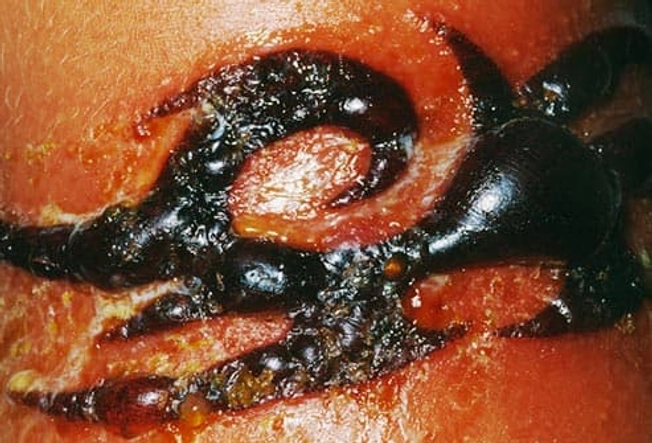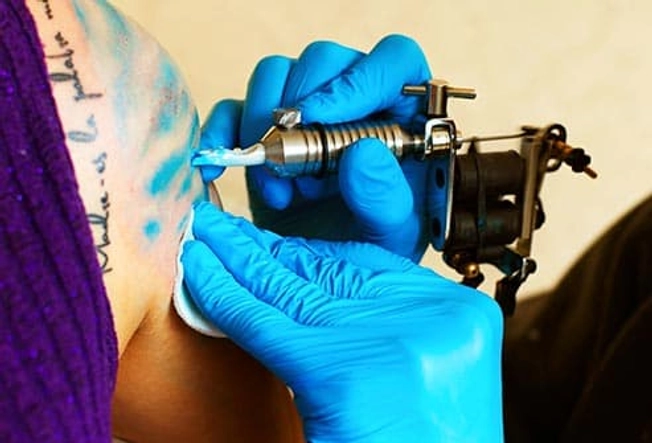When Tattoos Go Bad


Rethink Your Ink
Tattoos have been around for thousands of years, but they’ve really gone mainstream in the last decade or so. Still, no matter how advanced the technology gets, a tattoo amounts to a puncture wound filled with ink. And for some people, that can cause problems, from allergic reactions to infections and more.

Allergic Reactions
Some tattoo dyes, especially red and yellow, can cause an allergic reaction, especially when exposed to sunlight. The area around your tattoo might itch or swell, or you could get a rash. It can happen right after you get the tattoo, or years later. If it’s mild -- itchy skin and a few bumps -- treat it with a steroid cream. If your reaction is worse or if doesn’t go away in a couple of weeks, call your doctor.

Reactions to Light
Some ink reacts to light, especially sunlight. So if you don’t keep a new tattoo covered for a couple of weeks, your skin can swell or turn red. This is most common with yellow inks, but it can happen with red, too. Again, a mild case should get better with time and antihistamines or steroid creams, but if not, check with your doctor.

Skin Infections
If your tattoo artist doesn’t properly clean their equipment or uses it on more than one person, you could get an infection. If your skin swells, turns red, or feels tender, or you notice a pus-like drainage from the tattoo, call the doctor. You may need antibiotics to clear it up.

Granulomas
Sometimes your immune system thinks the pigment in tattoo ink is a threat and sends cells to the area to fight it. These cells clump together around the tattoo and create nodules which are called granulomas. If you see them, talk to your doctor. They might run tests to rule out other causes. They’ll treat them with steroids -- taken by mouth or as a shot.

Keloids
Keloids are areas of scar tissue that are raised from the skin. They can start under the tattoo and spread out. Keloids run in families and are more likely to affect people with dark skin. Treatment starts with OTC silicon products and steroid shots or prescription creams. If it's removed surgically, the keloid could grow back even larger without close follow up care from your doctor. If you have them already or someone in your family does, you might want to avoid tattoos.

Blood-borne Diseases
Tattoo needles can get bloody. If yours wasn’t cleaned well between uses, you could be exposed to diseases spread by blood, like hepatitis B or C, tetanus, or HIV. Choose your tattoo artist wisely. Make sure needles and other instruments are sterilized and that your artist wears gloves.

MRI Complications
You may notice that a tattooed area swells or burns when you get an MRI. This is rare and usually goes away without causing problems. Tell your radiologist or technician about your tattoos so they can take precautions. Your skin might not react, but the tattoo could affect the quality of the image.

Problems With Removal
If an allergic reaction or infection doesn’t clear up -- or if you just hate the tattoo -- you can have it removed. Laser removal technology has gotten better, but it isn’t perfect. It rarely leaves scars, but it can change your skin’s texture or color, especially if you have a darker tone. And it can cause what was a local reaction to spread.
IMAGES PROVIDED BY:
1) Thinkstock
2) National Institute of Health
3) Thinkstock
4) Science Photo Library
5) National Institute of Healt
6) Htirgan WikiMedia Commons
7) Thinkstock
8) Thinkstock
9) Photo Researchers. Inc
SOURCES:
American Academy of Dermatology: “Dermatologist warns consumers about complications linked to newer tattoo inks.”
American Association of Family Physicians: “Management of Keloids and Hypertrophic Scars.”
FDA.gov: “Think Before You Ink: Are Tattoos Safe?”
Harvard Health Publications: “Tattoos and Infection: Think Before You Ink.”
Mayo Clinic: “Allergic reaction to red ink.”
Mayo Clinic: “Tattoos: Understand risks and precautions.”
Medscape: “Dermatologic Conditions in Men of African Ancestry: Tattoo Skin Reactions.”
Medscape: “Tattoo Reactions.”
Medscape: “Tattoo Skin Reactions.”